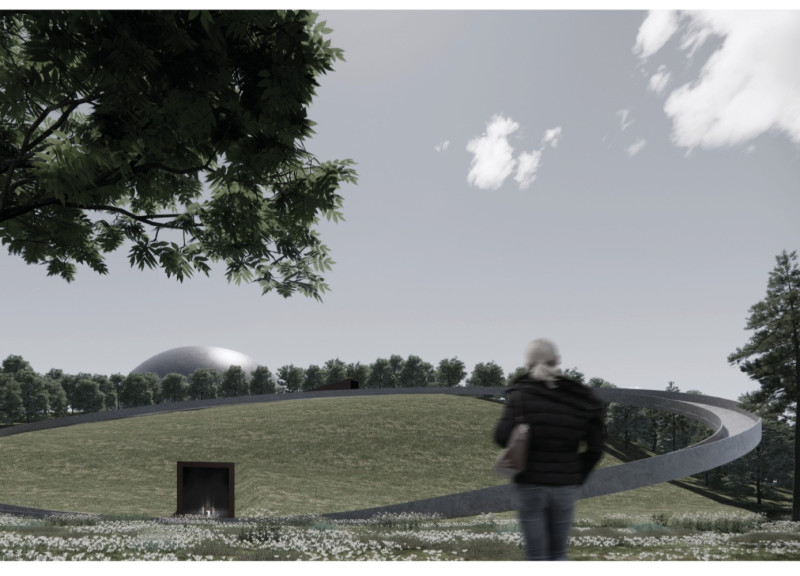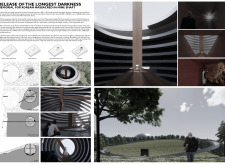5 key facts about this project
The Memorial for Korean Massacred in Mine Shaft is located at a former cobalt mine, a site that holds a significant connection to the tragic events of the Korean War. This memorial serves the dual purpose of remembrance and education. Its design emphasizes a journey from darkness to light, creating an engaging experience for visitors who come to reflect on the past.
Spatial Organization
The layout of the memorial utilizes strong directional elements to lead people through the space. Visitors enter the site and move from darker areas toward open, illuminated sections. The design makes use of both horizontal mine galleries and vertical shafts, adapting the existing structures to create areas for deeper reflection. This thoughtful arrangement of space not only honors those lost but also helps to convey the gravity of the historical events.
Metaphorical Pathway
Central to the design is a ramp that circles the mine shaft. This ramp acts as a vital pathway, directing visitors upward as they approach the memorial's heart. It represents a journey from confinement to a brighter future. As individuals ascend the ramp, they engage with the site's history, moving from feelings of sorrow into an uplifting atmosphere filled with hope. This transition encourages a personal connection to the memorial's intent.
Material Significance
Cobalt is mentioned in the design concept, linking the memorial to the historical context of the mine. While specific details about its use in the construction are not provided, cobalt carries the memory of wartime production. The mineral serves as a tangible reminder of the violence suffered by civilians during the Korean War, establishing a link between the past and the present that adds depth to the site.
Educational Component
The design includes a Learning Center aimed at educating visitors about the Korean War and its impact on civilian lives. By combining education with the memorial experience, the project promotes a better understanding of history and encourages conversations about the consequences of conflict. This blending of learning opportunities enriches the visit, making the memorial a place for both remembrance and exploration.
The careful design of the ramp, along with the play of light and space, allows each visitor to embark on their own journey. It culminates in a respectful and hopeful space dedicated to honoring the lives lost and fostering a dialogue about the significance of historical memory.



















































